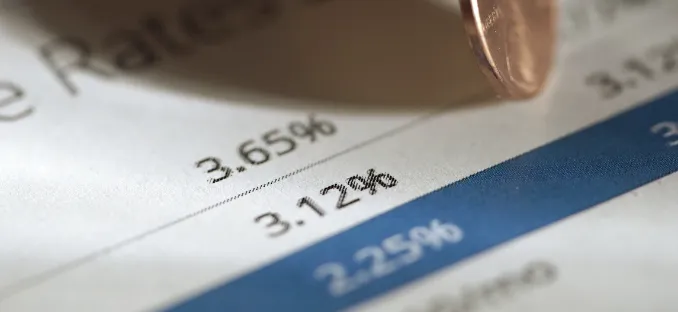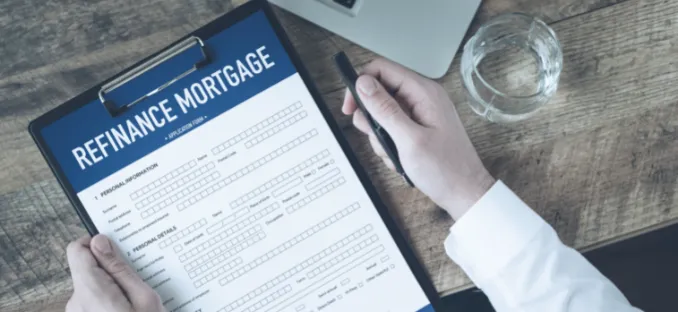From first-time buyers to seasoned investors, we’ve helped clients just like you
At Option Funding, Inc Oxnard, we’re more than lenders we’re guides. Our mission is to make your home purchase or refinance experience simple, stress-free, and built on trust.
Mortgage Rate Options
There are several types of home loans available, and it’s beneficial to understand your options. Fortunately, we're here to assist you in selecting the best home loan for your needs.
Fixed Rate

The traditional fixed-rate mortgage is the most common loan program, featuring monthly principal and interest payments that remain constant throughout the loan's term. Fixed-rate mortgages are available in terms ranging from 10 to 30 years and can typically be paid off early without penalty. This type of mortgage is structured, or "amortized," so that it is fully paid off by the end of the loan term. While the interest rate on a fixed-rate mortgage remains unchanged, your monthly payment might vary if you have an "impound account." Besides the monthly "principal + interest" and any mortgage insurance premium (required for homebuyers who put down less than 20% of the home's price), some lenders also collect additional funds each month for the prorated cost of property taxes and homeowners insurance. These additional funds are placed in an impound account, which the lender uses to pay the borrower's property taxes and insurance premiums when they are due. If the property tax or insurance premiums change, the borrower's monthly payment will be adjusted accordingly. Despite these potential adjustments, fixed-rate mortgage payments remain generally stable and predictable.
Adjustable ARM

Adjustable Rate Mortgages (ARMs) are loans with interest rates that can fluctuate during the loan's term. These loans typically start with a fixed interest rate for an initial period before adjusting based on current market conditions. The initial rate on an ARM is lower than that of a fixed-rate mortgage, making it possible to afford and purchase a more expensive home. ARMs are usually amortized over 30 years, with the initial rate fixed for a period ranging from 1 month to 10 years. Every ARM loan comprises a "margin" and an "index." Margins generally range from 1.75% to 3.5%, depending on the index and the loan-to-value ratio. The index is a financial benchmark to which the ARM loan is tied, such as the 1-Year Treasury Security, LIBOR (London Interbank Offered Rate), Prime, 6-Month Certificate of Deposit (CD), or the 11th District Cost of Funds (COFI).
When the ARM adjusts, the margin is added to the index and typically rounded to the nearest 1/8 of one percent to determine the new interest rate. This new rate is then fixed for the subsequent adjustment period. Adjustments usually occur annually, but rate changes are limited by "caps." For example, if you have a "3/1 ARM" with an initial cap of 2%, a lifetime cap of 6%, and an initial interest rate of 6.25%, the highest rate you could have in the fourth year would be 8.25%, and the maximum rate over the loan's life would be 12.25%.
Interest Only

An "Interest Only" mortgage means the monthly payment covers only the interest for a specified period, delaying principal repayment. This option is available for fixed-rate, adjustable-rate, and option ARMs. After the interest-only period, the loan becomes fully amortized, resulting in significantly higher monthly payments compared to a fully amortizing loan from the start. The longer the interest-only period, the higher the subsequent payments will be. While you won't build equity during the interest-only term, it can help you afford a more expensive home initially. Qualified based on the lower interest-only payments, many borrowers refinance before the interest-only term ends. For example, a $250,000 loan at 6% over 30 years would have monthly payments of $1,499. With a 5-year interest-only plan, the initial payment would be $1,250, saving $249 per month. After five years, payments rise to $1,611. This option benefits those expecting their income to increase or planning to refinance. Interest-only mortgages can save money short-term but cost more over 30 years. However, many borrowers repay their loans before the term ends. These loans are beneficial for borrowers with irregular incomes, as they allow for interest-only payments during lean periods and larger payments when income is higher.
Graduated Payments

A graduated payment mortgage is a loan where the payment amount increases annually for a set period (such as 5 or 10 years) and then becomes fixed for the remainder of the loan term. When interest rates are high, borrowers might choose a graduated payment mortgage to improve their chances of qualifying, as the initial payments are lower. However, the downside of lower initial payments is an increase in the interest owed, and the payment shortfall from the early years is added to the loan balance, potentially causing "negative amortization." Negative amortization occurs when the loan payments are less than the interest charged during that period, resulting in an increased outstanding loan balance.
Loan Programs
Jumbo Loans

A jumbo loan is a mortgage designed to finance properties that exceed the price limits of conventional conforming loans. The Federal Housing Finance Agency (FHFA) sets the maximum amount for conforming loans, which is $548,250 in most counties. Properties that surpass this limit require a jumbo loan. Also known as non-conforming conventional mortgages, jumbo loans are riskier for lenders because they cannot be guaranteed by Fannie Mae or Freddie Mac, leaving lenders unprotected if a borrower defaults. Jumbo loans can have either fixed or adjustable interest rates and come with various term options.
DSCR LOAN

A Debt Service Coverage Ratio (DSCR) loan is designed specifically for real estate investors who want to qualify based on a property’s cash flow rather than personal income. At Option Funding, we specialize in DSCR loans, making it easier for investors to expand their portfolios without the strict income verification required by traditional loans. By focusing on the property’s rental income compared to its expenses, these loans provide a flexible solution for building wealth through real estate. Whether you’re purchasing your first rental property or adding to an existing portfolio, our team ensures you get the right financing to maximize your investment potential.
VA Loans

The VA Loan offers veterans a federally guaranteed home loan that requires no down payment. This program aims to provide housing and support for veterans and their families. The Veterans Administration insures lenders against defaults, allowing them to offer lower interest rates and better terms than conventional home loans. VA home loans, available in all 50 states, often come with reduced closing costs and no prepayment penalties. Additionally, veterans at risk of defaulting on their loans may access various support services. VA home loans are available to military personnel who have served 181 days during peacetime, 90 days during wartime, or to spouses of servicemembers who were killed or are missing in action.
USDA Loans

USDA loans are low-interest mortgages with no down payment requirements, tailored for low-income Americans who lack the creditworthiness for conventional mortgages. These loans must be used to purchase a home in designated areas, which include various rural and suburban locations.
NonQM Loans

A Non-QM (Non-Qualified Mortgage) loan is designed for borrowers who don’t meet traditional loan guidelines but still have the ability to repay. It’s ideal for self-employed individuals, investors, retirees, or those with recent credit issues. These loans offer flexible income documentation, higher debt-to-income limits, and options like interest-only payments. Non-QM loans are a smart option for those who may not qualify through conventional lenders.
FHA Home Loan

FHA home loans are mortgages insured by the Federal Housing Administration (FHA) to protect against default. Available for both single-family and multifamily homes, FHA loans enable banks to issue loans with minimal risk and capital requirements. While the FHA does not issue loans or set interest rates, it guarantees the loans against default. These loans are particularly beneficial for individuals who may not qualify for conventional mortgages, including first-time homebuyers. They feature low minimum down payments, lenient credit requirements, and flexible income guidelines.
Get a Free Quote Today
Contact Info
Address: 1000 Town Center Dr, Suite 135 Oxnard, CA 93036

© Copyright 2025. Option Funding. All rights reserved.